The kit that showed you could trust the atom
Thermodynamics is the 19th century equivalent of the grand unified theory of the universe. Starting with Count Rumford and Sadi Carnot’s speculations about the heat produced by the boring of cannons, by the middle of the century a clutch of scientists had turned it into a robust conceptual framework that used energy and its distribution to join the dots between every chemical and physical phenomenon.
Yet the framework was predicated on a series of crucial assumptions about the nature of matter: that it consisted of discrete particles that behaved as independent entities. For some physical scientists this was too much; famously Ernst Mach and Wilhelm Ostwald (Chemistry World, June 2009, p70) refused to accept it. Sure the maths worked, they argued, but these supposed ‘atoms’ were nothing more than a convenient fiction. The idea was largely left by the wayside until the end of the 19th century, when its re-emerged thanks to work by a small number of scientists who began to think deeply about the nature of gases and about vacuum.
Martin Knudsen was born in the countryside of Denmark, where his farmer parents owned an estate. It became clear while he was in school that he had a real flair for the physical sciences and after graduating form the Cathedral School in Odense he began studying science in Copenhagen at the Technical University. Within two years he had been taken under the wing of the professor of physics Carl Christiansen, who spotted Knudsen’s unusual experimental talent. Knudsen went on to win the university’s gold medal for a project about sparks in 1895, and graduated in 1896 with a thesis on methods to make X-rays, one of the hot topics of the moment. Christiansen found him a position as an assistant lecturer, and was promoted to a full teaching position in 1901, eventually succeeding his mentor.
Knudsen worked in two totally distinct areas for the entire length of his career. On the one hand he began working on hydrography, and for 40 years edited the Bulletin Hydrographique and helped to calculate tides and to map the ocean floor. But he was also teaching physics to medical students and thinking about the flow of gases at low pressure through narrow tubes. At high pressure, intermolecular collisions dominated; at really low pressure molecules would only interact with the walls and propagate linearly, making molecular beams possible. A dimensionless quantity, the Knudsen number, identified the limits for these flow regimes. He also derived a description of the scattering and reflection of molecules off of surfaces. This work led to him drawing an analogy between gas transport and thermal conduction, which he would later develop into the theory underpinning Marcello Pirani’s thermal conductivity gauges (Chemistry World, April 2012, p70).
All of this work was accompanied by careful experimental measurement. Knudsen was an early adopter of Wolfgang Gaede’s electric rotary pump (Chemistry World, May 2009, p72). Reading Knudsen’s work in turn led Gaede to design the molecular drag pump, the progenitor of today’s turbomoleculars.
Given his use of mercury pumps, it is hardly surprising that Knudsen investigated the behaviour of mercury vapour, making the first detailed measurements of its vapour pressure. He then provided a detailed treatment of the flow of gases through narrow orifices, at last explaining Thomas Graham’s century-old law of effusion; he developed his theory into a method for determining molecular weight and for separating molecules by mass, effectively seeding the isotopic separations of the Manhattan Project. His source of vapour – a crucible enclosed in a housing with a small hole, now called a Knudsen cell – was, for a long time, the method of choice for molecular beam and epitaxy experiments.
A key problem for Knudsen was the measurement of low pressures. At the time, the only reliable device was the Herbert McLeod gauge (Chemistry World, Sept 2011, p74), still used today, in which a small slug of gas is compressed with mercury in a capillary, the volume depending on the original pressure. Instead, Knudsen imagined exploiting molecular motion to cause an object to move. He suspended a thin metal plate by a silk thread and placed it between two surfaces, one cooled and one heated. Watching with a small microscope, he must have delighted to see the plate move towards the cold side – molecules striking the hot surface gained momentum and struck the plate at greater speed, pushing it sideways. By carefully controlling the temperature difference on either side, Knudsen found a beautiful linear behaviour that was fairly independent of the molecular weight of the gas.
But the device was horribly fragile and difficult to calibrate. To make it more robust, Knudsen suspended the metal plate from a torsion thread. With identical hot and cold plates offset on either side, molecules from the hotter side would cause the central plate to twist round, a motion that could be monitored with a mirror galvanometer.
Today, Knudsen manometers have largely been replaced by ion gauges. The quest for a gauge that is truly independent of molecular weight remains a dream. But for conceptual simplicity, there is little to beat Knudsen. His work a reminder that you shouldn’t just believe in atoms – you can trust them.
Acknowledgments
I am grateful to Steve Price for inspiration and gentle corrections.
Martin Knudsen
Danish physicist (1871–1949). Molecular gas flow expert and creator of the Knudsen cell
Thermodynamics is the 19th century equivalent of the grand unified theory of the universe. Starting with Count Rumford and Sadi Carnot’s speculations about the heat produced by the boring of cannons, by the middle of the century a clutch of scientists had turned it into a robust conceptual framework that used energy and its distribution to join the dots between every chemical and physical phenomenon.
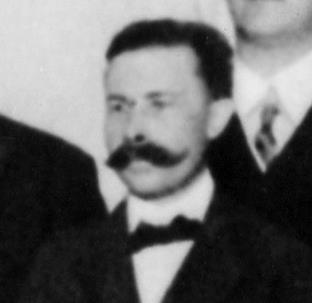
Yet the framework was predicated on a series of crucial assumptions about the nature of matter: that it consisted of discrete particles that behaved as independent entities. For some physical scientists this was too much; famously Ernst Mach and Wilhelm Ostwald refused to accept it. Sure the maths worked, they argued, but these supposed ‘atoms’ were nothing more than a convenient fiction. The idea was largely left by the wayside until the end of the 19th century, when it re-emerged thanks to work by a small number of scientists who began to think deeply about the nature of gases and vacuum.
Martin Knudsen was born in the countryside of Denmark, where his farmer parents owned an estate. It became clear while he was in school that he had a real flair for the physical sciences and after graduating from the Cathedral School in Odense he began studying science in Copenhagen at the Technical University. Within two years he had been taken under the wing of the professor of physics Carl Christiansen, who spotted Knudsen’s unusual experimental talent. Knudsen went on to win the university’s gold medal for a project about sparks in 1895, and graduated in 1896 with a thesis on methods to make X-rays, one of the hot topics of the moment. Christiansen found him a position as an assistant lecturer, and was promoted to a full teaching position in 1901, eventually succeeding his mentor.
Knudsen worked in two totally distinct areas for the entire length of his career. On the one hand he began working on hydrography, and for 40 years edited the Bulletin Hydrographique and helped to calculate tides and map the ocean floor. But he was also teaching physics to medical students and thinking about the flow of gases at low pressure through narrow tubes. At high pressure, intermolecular collisions dominated; at really low pressure molecules would only interact with the walls and propagate linearly, making molecular beams possible. A dimensionless quantity, the Knudsen number, identified the limits for these flow regimes. He also derived a description of the scattering and reflection of molecules off of surfaces. This work led to him drawing an analogy between gas transport and thermal conduction, which he would later develop into the theory underpinning Marcello Pirani’s thermal conductivity gauges.
All of this work was accompanied by careful experimental measurement. Knudsen was an early adopter of Wolfgang Gaede’s electric rotary pump. Reading Knudsen’s work in turn led Gaede to design the molecular drag pump, the progenitor of today’s turbomoleculars.
Given his use of mercury pumps, it is hardly surprising that Knudsen investigated the behaviour of mercury vapour, making the first detailed measurements of its vapour pressure. He then provided a detailed treatment of the flow of gases through narrow orifices, at last explaining Thomas Graham’s century-old law of effusion; he developed his theory into a method for determining molecular weight and for separating molecules by mass, effectively seeding the isotopic separations of the Manhattan Project. His source of vapour – a crucible enclosed in a housing with a small hole, now called a Knudsen cell – was, for a long time, the method of choice for molecular beam and epitaxy experiments.
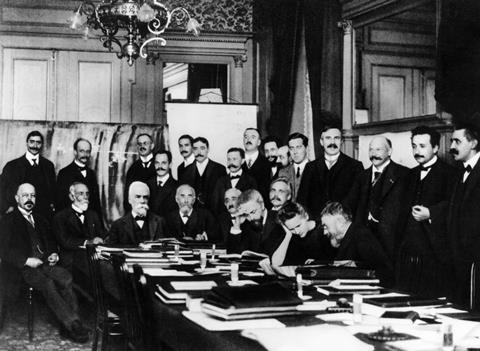
A key problem for Knudsen was the measurement of low pressures. At the time, the only reliable device was the Herbert McLeod gauge, still used today, in which a small slug of gas is compressed with mercury in a capillary, the volume depending on the original pressure. Instead, Knudsen imagined exploiting molecular motion to cause an object to move. He suspended a thin metal plate by a silk thread and placed it between two surfaces, one cooled and one heated. Watching with a small microscope, he must have delighted to see the plate move towards the cold side – molecules striking the hot surface gained momentum and struck the plate at greater speed, pushing it sideways. By carefully controlling the temperature difference on either side, Knudsen found a beautiful linear behaviour that was fairly independent of the molecular weight of the gas.
But the device was horribly fragile and difficult to calibrate. To make it more robust, Knudsen suspended the metal plate from a torsion thread. With identical hot and cold plates offset on either side, molecules from the hotter side would cause the central plate to twist round, a motion that could be monitored with a mirror galvanometer.
Today, Knudsen manometers have largely been replaced by ion gauges. The quest for a gauge that is truly independent of molecular weight remains a dream. But for conceptual simplicity, there is little to beat Knudsen. His work is a reminder that you shouldn’t just believe in atoms – you can trust them.
Acknowledgments
I am grateful to Steve Price for inspiration and gentle corrections.
References
M Knudsen, Ann. Physik (Leipzig), 1910, 32, 809



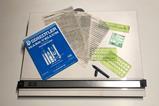

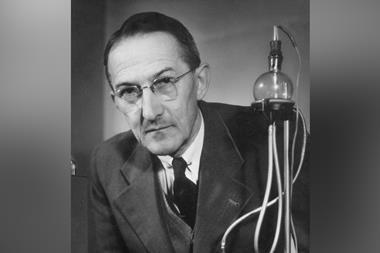



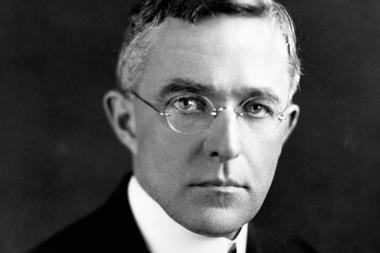


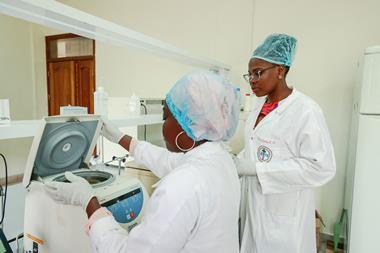




No comments yet